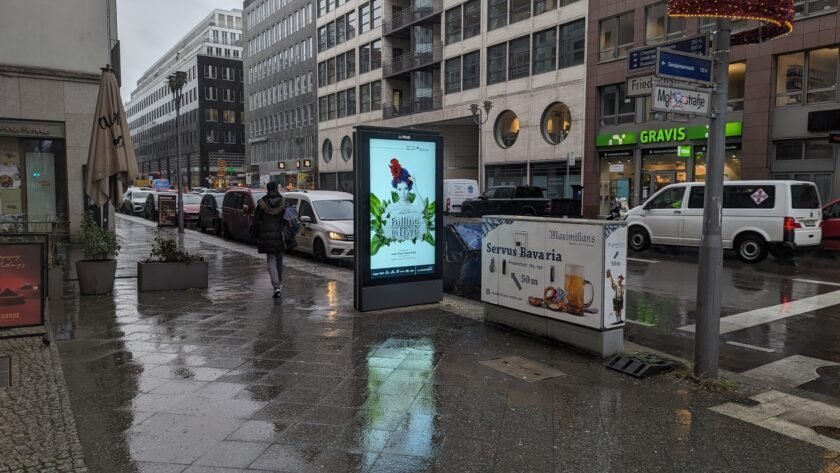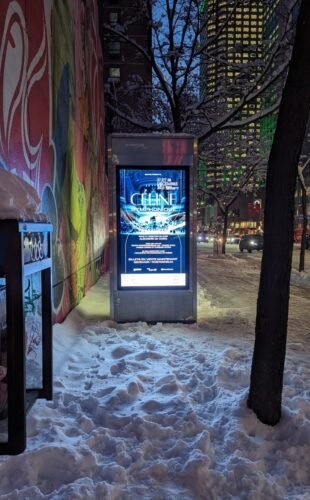Montreal | DooH screens must deliver bright images even in direct sunlight. High brightness displays with up to 5,000 nits are available on the market, but DooH screens are not always operated optimally. Many screens are too bright, especially on cloudy days and at night.
It’s snowing in Montreal, it’s raining in Berlin – the weather changes brightness in addition to the time of day and season. Outdoor displays and LEDs have to adapt to the situation – this usually happens with brightness sensors. However, sensors are not always activated or installed professionally. This is no longer acceptable in today’s times in the midst of an energy crisis.

The focus is particularly on the automatic brightness control of DooH screens in public spaces. With a few exceptions, the large out-of-home operators have automatic brightness control under control; more often it is screens from smaller DooH operators and integrated screens in EV charging stations, large kiosk systems and individual LEDs that cause problems.
Some of the most common reasons are
- Ignorance (no or deactivated sensors)
- Convenience (for double-sided screens, measurements are only taken on one side),
- Technical inability (sensors are covered by housings, car headlights “irritate” sensors
- Economical (central brightness control for entire regions following sunrise and sunset)

Brightness (backlight for LCD, direct brightness for LED) is the most important lever for Visual Solutions’ power consumption. Screens that are too bright also harm the acceptance of digital signage and DooH in public spaces.


